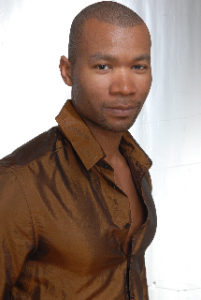 Before becoming a scientist and a writer, I was a scientist and a dancer. I fell in love with Salsa music and dance during graduate school, and became hooked. The dancer I emulated the most was Shaka Gonzalez Brown, founder the Capital Congress Latin Music and Dance Festival.
Before becoming a scientist and a writer, I was a scientist and a dancer. I fell in love with Salsa music and dance during graduate school, and became hooked. The dancer I emulated the most was Shaka Gonzalez Brown, founder the Capital Congress Latin Music and Dance Festival.
Two years ago, one of my last pieces on the Examiner was an interview with my Salsa-hero Shaka Gonzalez Brown. We talked about both his personal journey as a dancer, and his signature event, the Capital Congress which takes place every June. I’ll most likely promote this timeless piece annually as it not only discusses a magical time in my own life, but it also gives anyone unfamiliar with it, a look into the world of Latin music and dance. The pictures in this post were graciously shared by Shaka himself.
* * *
 In Washington DC, the words Capital and Congress typically bring to mind political showdowns between Democrats and Republicans. There is however an annual gathering in Washington DC which uses the same words but for a more fun purpose; the Capital Congress Latin Dance Festival. The much anticipated event will feature four days of non-stop: Salsa, Bachata, Kizomba, and Zouk. There will be numerous: workshops, master classes, boot camps, and parties. In honor of the event, the co-founder of the Capital Congress, Shaka Gonzalez Brown granted an interview on April 25 to discuss: his journey as a dancer, teacher, and promoter, the current popularity of the Latin dances, and finally the Capital Congress.
In Washington DC, the words Capital and Congress typically bring to mind political showdowns between Democrats and Republicans. There is however an annual gathering in Washington DC which uses the same words but for a more fun purpose; the Capital Congress Latin Dance Festival. The much anticipated event will feature four days of non-stop: Salsa, Bachata, Kizomba, and Zouk. There will be numerous: workshops, master classes, boot camps, and parties. In honor of the event, the co-founder of the Capital Congress, Shaka Gonzalez Brown granted an interview on April 25 to discuss: his journey as a dancer, teacher, and promoter, the current popularity of the Latin dances, and finally the Capital Congress.
Anwar Dunbar: Shaka, first off thank you for this opportunity to interview you. I hadn’t been out dancing in a long time when I saw you at Mr. Mambo’s Salsa Social. I write about education and STEM-related topics for the Examiner and when I was at the social, I recalled that Salsa dancing is a science in itself. In addition to educating oneself on becoming a dancer socially or professionally, it’s also very important for personal health, and quality of life. With the Capital Congress approaching, I figured it would be a great time to potentially interview you, so again thank you.
Shaka Gonzalez Brown: It’s funny how those light bulb moments happen.
AD: Yes it is. My questions will cover a broad range of topics: your background, varying aspects of social dancing, the different Latin dances, and finally the Capital Congress. So with that, we’ll get started. So Shaka you’re originally from Washington DC right?
SGB: That’s right. I was born at the Howard University Hospital.
AD: How did you get started dancing Salsa? Is it something you grew up with or at some point did you wander into a studio? In an interview years ago in Johnny Johnson’s La Voz Del Mambo magazine, I think you said that there was a female (laughing) – which is the reason a lot of us guys get into this, but how did you get started?
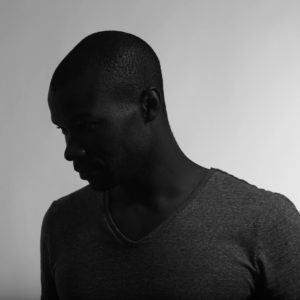 SGB: I got interested in Salsa in my senior year of college at Florida A & M University (FAMU). There was a Cuban restaurant I liked going to, and there was waitress who I thought was the prettiest lady in the world. I would go there and eat about three to four times a week. One day she told me about their end of the year party; the pig roast barbecue outside party type of thing and she told me to come to it. She could have told me to go anywhere else and I would have been there.
SGB: I got interested in Salsa in my senior year of college at Florida A & M University (FAMU). There was a Cuban restaurant I liked going to, and there was waitress who I thought was the prettiest lady in the world. I would go there and eat about three to four times a week. One day she told me about their end of the year party; the pig roast barbecue outside party type of thing and she told me to come to it. She could have told me to go anywhere else and I would have been there.
I got there and they were playing Merengue. She just kind of moved around and bopped around and she asked me to dance. I didn’t know what to do, and I was confused. My friend went off and danced with her and I realized that I had been coming to this place so many years looking for that one opportunity, and I had just missed it. And that’s when I decided that I was going to learn how to do this, and maybe one day I’d get a chance to dance with her.
AD: Now in terms of your lineage, are you part Cuban?
SGB: My grandfather is Cuban; he grew up in Tampa. That’s where my name comes from.
AD: You do dance fulltime now, but your educational background is in Information Technology systems (IT) right?
SGB: Yes I studied IT; computer information systems. I graduated last century.
AD: When did you decide that you wanted to do dance fulltime in terms of teaching, performing and promoting events?
SGB: I didn’t so much decide that I wanted to do dance fulltime. For what I was doing in IT, I was getting great jobs. I graduated, and I was high in my classes. For what that experience was in school, the path I was on – I wasn’t really happy with it. My priorities in life have always been to: travel, and to interact with people, to teach and to learn – that’s pretty much what keeps me keeps me going. I wasn’t waking up excited to go to work to setup computers, and mail them off, and set up more computers. There was no joy to keeping networks secure. It was just a constant demand, and it starts to tug at you. It created a vacuum and so I said let me do this Salsa teaching thing that I really enjoy after I had quit the job, and it’s been growing since then.
AD: Now were your coworkers surprised to hear that you were this instructor and skilled dancer?
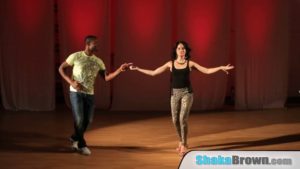 SGB: My coworkers? They just thought it was a hobby. When you’re spending more time doing your hobby than your actual job, you have to make some adjustments. My thought process was that if I’m spending 10-12 hours on a job from the time I wake up to the time I get home, and what I really enjoy doing, I’m only doing for four to five hours each day, how can I enjoy doing what I love doing for eight hours a day, make that my fulltime job and put that same energy and commitment into it? Then I would be a lot happier, and then numbers-wise I said, ‘You know I can make something like this work.’
SGB: My coworkers? They just thought it was a hobby. When you’re spending more time doing your hobby than your actual job, you have to make some adjustments. My thought process was that if I’m spending 10-12 hours on a job from the time I wake up to the time I get home, and what I really enjoy doing, I’m only doing for four to five hours each day, how can I enjoy doing what I love doing for eight hours a day, make that my fulltime job and put that same energy and commitment into it? Then I would be a lot happier, and then numbers-wise I said, ‘You know I can make something like this work.’
AD: Now I don’t know if you remember this, but on one of your visits to Detroit for the Yoruba Andabo Salsa Social, I told you, ‘Shaka out of all of the dancers I’ve seen you’re my favorite,’ to which you looked at me with a surprised expression and said, ‘Thank you.’ But yes you became my favorite dancer. You’re going to laugh at this, but it got to the point where when I moved to Albany, NY, my friend Lana Ortiz literally started calling me, ‘Shaka.’
SGB: I really appreciate that (laughing).
AD: Seriously. Albany was more of an isolated community at the time so when I moved there I was saying things like, ‘Shaka Brown, Shaka Brown, he’s my favorite dancer-,’ and I would just go on and on.
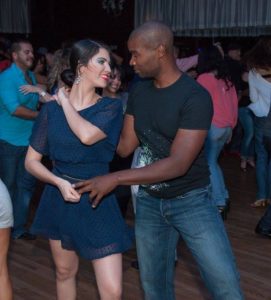 SGB: I really appreciate hearing that. One day I’m going to go to Albany. Folks are going to say, ‘You’re not Shaka Brown,’ and I’m going to say, ‘Yes I am (laughing).’
SGB: I really appreciate hearing that. One day I’m going to go to Albany. Folks are going to say, ‘You’re not Shaka Brown,’ and I’m going to say, ‘Yes I am (laughing).’
AD: In another instance Lana was riding around in her car with someone from one of New York City’s well established dance companies. I called her on her cell phone and she picked up the phone and said, ‘Shaka?’ You could hear the other person literally ask, ‘Is that Shaka Brown?’ Seriously (laughing).
The first time I remember seeing you was at the Canada Salsa Congress in 2002 or 2003. I think Troy and Jorjet were having an issue with their music during a workshop, and you lent them your iPod or something. That was around the time you were leading the Clavekazi Dance Company and you guys had the original lineup. I think that was the “Golden Age” of Salsa in DC, and I moved here three to four years afterwards. What was it like? I hear so much about it. You were out social dancing pretty regularly. Psyon was out regularly and there were a number of dance companies and schools here all at once. Describe that time.
SGB: Well that Golden Age – it’s scary to think about that because to think about a Bronze Age and a Golden Age, it sounds like it was a millennium ago. That was probably 2000 to 2003 or 2004 because once I graduated from FAMU, I came back to DC, and then moved to Brazil when I quit my job. I came back at the beginning of 2001. Our goal was to start a dance company, and teach people how to dance and to promote mambo (NY Style On2 Salsa). The combination of people on the same mission created a wave of dancers and appreciation.
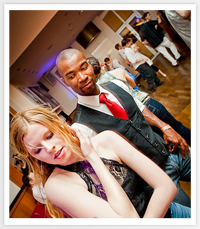 We would go out dancing just about every night: Clarendon Grill on Mondays, the Barking Dog on Tuesdays, and then Zanzibar on Wednesdays. Zanzibar was like the peak of the week and after that we just kind of worked our way around to other place the rest of the week; Thursdays and Fridays we would go to Havana Village, and the Salsa Room/Cecelia’s. Saturdays there was Relish which changed its name to Ooh La La, and that was right downtown. Sundays you might have off unless you had a barbecue over someone’s house. But there was just so much opportunity for people to go out and dance, and go out and practice.
We would go out dancing just about every night: Clarendon Grill on Mondays, the Barking Dog on Tuesdays, and then Zanzibar on Wednesdays. Zanzibar was like the peak of the week and after that we just kind of worked our way around to other place the rest of the week; Thursdays and Fridays we would go to Havana Village, and the Salsa Room/Cecelia’s. Saturdays there was Relish which changed its name to Ooh La La, and that was right downtown. Sundays you might have off unless you had a barbecue over someone’s house. But there was just so much opportunity for people to go out and dance, and go out and practice.
You had people who just loved the music and loved the dancing; people like Eileen Torres. It was so important to her that she would be at Zanzibar regularly. Folks would come out and she would use that as an opportunity to teach them about the music and the artists. She would bring people down from New York City and say, “This is Pequeño Johnny playing the congas.” And so in that way, she would bring life to the music so folks were more connected to what was going on, and we really appreciated that.
And even the DJs, DC has some of the best Latin DJs in terms of their knowledge of the music and their commitment to knowing what they’re doing when they’re playing. It’s not just, “Oooh I like that song.” They looked at the album, the singers, the percussionists, every single person on there to ensure that it was going to be a good combination. We took a lot of it for granted because I just thought that was how it was supposed to be. I didn’t realize until I started going out to other cities that there wasn’t that appreciation and the same focus on the music in other places.
AD: Now on that same vein, what’s the Miami Salsa community like in comparison to DC’s or New York’s?
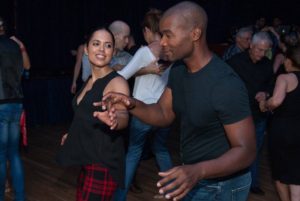 SGB: Miami is a different kind of scene. It’s definitely more Latin. In terms of Salsa, there are way more stations. You can turn on the radio here and hear Latin music all of the time. That’s not an issue. In DC, you’ll have Nancy Alonzo – you’ll have stations where for the next two hours, she for example will have a Salsa program, and that’s all they’re going to do.
SGB: Miami is a different kind of scene. It’s definitely more Latin. In terms of Salsa, there are way more stations. You can turn on the radio here and hear Latin music all of the time. That’s not an issue. In DC, you’ll have Nancy Alonzo – you’ll have stations where for the next two hours, she for example will have a Salsa program, and that’s all they’re going to do.
She would do a similar thing to what Eileen did at Zanzibar; promote the knowledge of that particular Salsa culture, whereas down here in Miami, you turn on the radio, you’ll get a station that speaks Spanish, but you’ll get lots of Bachata and a wide range of other Latin genres, so it’s not necessarily very specific to where you’ll only get Salsa. I really can’t speak on New York, because I know it has a huge salsa community, and with the amount of Puerto Ricans and Nuyoricans there, it’s way past what I would feel comfortable discussing. When I’m in New York City, I just like being out there on a corner and seeing someone with a conga,
and just enjoying the music.
AD: Yes there is nothing like it. I went to the Jimmy Anton Social after not going for a couple of years, and I saw the same core group of folks dancing hard for four hours on a Sunday evening. There’s nothing like it.
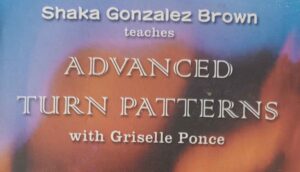
So a year or so after I saw you at the Canada Salsa Congress that first time, you actually came to Detroit; the first of three times, and I think it was around that time that I bought your Advanced Turn Patterns VHS with Griselle Poncé. Shortly thereafter I was doing the arm bump move where you bump her hand with your elbow and catch it on the other side. Then I got you step by step series with Yesenia Peralta. The interesting thing is that after I watched your instructional videos and then watched you social dance, the two looked very different. The following is rare footage of Shaka dancing with the great Magna Gopal at the 2007 Atlanta Salsa Congress.
As opposed to going move to move to move, which is what a lot of young (and older) dancers do, your dancing (partner-work and styling) looked very improvisational, and very organic – almost like you were out there experimenting every time with every song, and with every lady. You just made it look really easy, and really fun. You also had your own image: the polo shirt, jeans, sneakers, etc. How did you develop your style? Who were your influences?
SGB: I developed that particular style because I like Kung Fu movies. I know that sounds funny but I spent so much time in college watching Kung Fu movies and it wasn’t about the plot. I just loved seeing the interaction of the fight sequences. I didn’t want lots of cutaways, and I wanted to see how a fighter would go from this move to that move and after that move how he would go to this move – and so it’s not a plan. In my mind it was not knowing what was coming up, and just seeing how people reacted to it. That’s what I love.
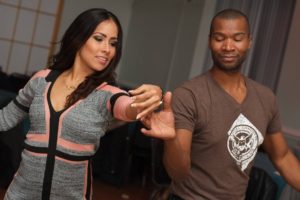 I’m not really a fighter so the closest thing I get to that is partner dancing. It’s the same thing of – I’m going to try to do this thinking that my partner is going to do that, and if they don’t do that I need to be able to do something different and adjust to it in such a way to make it enjoyable, and non-painful. It’s the adjustment to that that I love. So what I did was I took classes anywhere that I could, because I liked seeing how different people taught.
I’m not really a fighter so the closest thing I get to that is partner dancing. It’s the same thing of – I’m going to try to do this thinking that my partner is going to do that, and if they don’t do that I need to be able to do something different and adjust to it in such a way to make it enjoyable, and non-painful. It’s the adjustment to that that I love. So what I did was I took classes anywhere that I could, because I liked seeing how different people taught.
But the moves that I’ve learned in the classes, I’ve never taken it as, ‘Okay this is choreography.’ These were tools with which I would try to figure out how to get from one to the other. Likewise the way that I teach, I try to teach things in terms of them being very granular; you can do this move at this time, and you can do that move at this time, and then you can make this transition – so the students can kind of build their own dance.
So when you watch me dance, I’m not going in there with a plan. I’m just going in saying, okay it looks like this person likes this band or they don’t, their arms are strong or they’re not, or maybe they like this kind of song – so all of those variables are what I throw into a soup, and as a chef I say, “Okay what would I do with these ingredients?” And that’s where it comes from. It’s like my mind is constantly running, but I’m living in that moment, and that’s what I love about it.
AD: That’s fascinating because when dancers start out, if the partner work breaks down for whatever reason, the lead or the follow will apologize for making a perceived mistake. The other thing I observed watching you was that your musicality was always on point.
SGB: Sometimes I’m dancing with someone and they say, ‘I’m not sure I can follow you,’ and I tell them, ‘I have no idea of what I’m going to do, so I can’t expect you to know so don’t worry about it. There’s no plan here. We’re just going to enjoy this song right now.’
AD: Now one of the other most important things I learned from you when you visited us at the Yoruba Andabo Salsa Social in Detroit was that you danced with all of the ladies regardless of level and had a blast with all of them. When me and some of my peers were younger dancers and trying to prove ourselves, we only wanted to dance with the intermediate and advanced ladies, but I noticed that you didn’t discriminate and afterwards I decided that I too would dance with everyone regardless of level, and try to make it fun. So you learn a lot by watching.
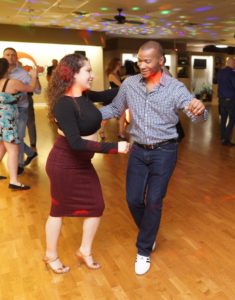 SGB: Yes you do. There’s no scale; this is a good dancer, this is a great dancers, this is a fantastic dancer and you only want to dance with people at this level or at that level. It’s kind of like an ocean where you say, ‘I only want to go in the ocean where the water is this deep.’ There are so many things to appreciate at so many different levels. Every single person you dance with, you’re understanding them, and you’re talking with them and communicating with them. If their timing is horrible, that’s what you guys can work on; giving her something you guys can share and appreciate.
SGB: Yes you do. There’s no scale; this is a good dancer, this is a great dancers, this is a fantastic dancer and you only want to dance with people at this level or at that level. It’s kind of like an ocean where you say, ‘I only want to go in the ocean where the water is this deep.’ There are so many things to appreciate at so many different levels. Every single person you dance with, you’re understanding them, and you’re talking with them and communicating with them. If their timing is horrible, that’s what you guys can work on; giving her something you guys can share and appreciate.
Sometimes I get turned off when someone says, ‘Oh you should dance with this person because they’re a good dancer.’ As I dance with them, it might not be a good dance because what someone else considers a good dance might not be a good dance for me just because they can spin a lot or they’re really light. Being really light isn’t just the dance because I’ve danced with people who didn’t really do anything at all, but I learned something because it was a particular song where they told me, ‘Oh I really love this song,’ and for me I may have just heard the beat and wasn’t listening to what they were listening to. I may hear something else and I learn something, and it didn’t matter how many times we spun or how many cross body leads, or turn patterns we did. It was about that experience, and you get that from every dance.
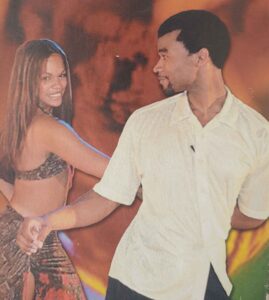
AD: That’s interesting because as young dancers, when you go to Congresses, you feel like you have to dance with: Magna Gopal, Griselle Poncé, Anna Masacote, etc.
SGB: The “A-Listers”.
AD: Yes and if they tell you, ‘No,’ you’re crushed but if they say, ‘Yes,’ it makes your whole weekend, and you feel like you’ve really come up and been validated in some way.
 Thank you for taking out the time to read this interview. It will be continued in part two of, Shaka G Brown discusses Salsa, and the Capital Congress Latin Dance Festival. To learn about the stellar schedule of workshops, and performances Shaka Gonzalez Brown and his team have put together, visit the Capital Congress website.
Thank you for taking out the time to read this interview. It will be continued in part two of, Shaka G Brown discusses Salsa, and the Capital Congress Latin Dance Festival. To learn about the stellar schedule of workshops, and performances Shaka Gonzalez Brown and his team have put together, visit the Capital Congress website.
If you’ve found value here and think it would benefit others, please share it and/or leave a comment. You can follow me on TwitterX at @BWArePowerful. Lastly, you can follow me on Instagram at @anwaryusef76.
A Quick Plug for My Book
Hello. Thank you for clicking on this link, and I hope you enjoyed this interview. Writing a book was the genesis of my blogging and becoming a video content creator. I have published part one of my book project entitled, The Engineers: A Western New York Basketball Story. It is currently available on Amazon in eBook, hardcover, and paperback formats. I also selling signed hardcover and paperback copies on my online store entitled Big Words Authors. You can place an order now if you want a signed copy. The paperback edition is also available on IngramSpark. There is also a page discussing the book. Please consider visiting it to learn more about the project and see promotional content I’ve created surrounding the project.
